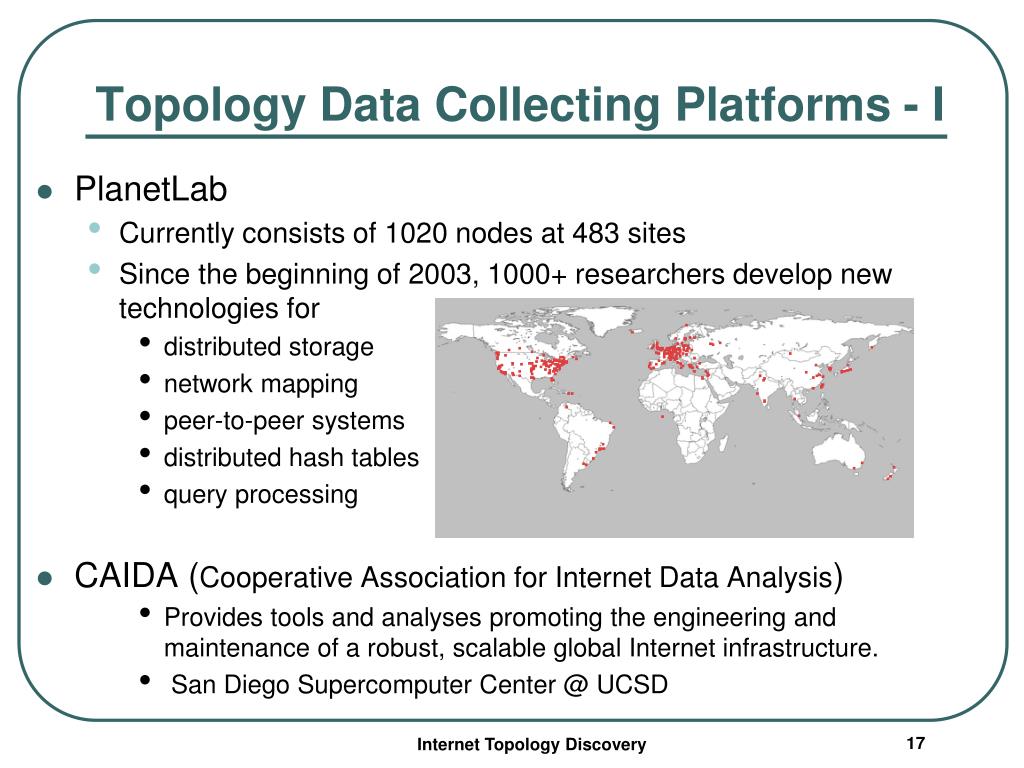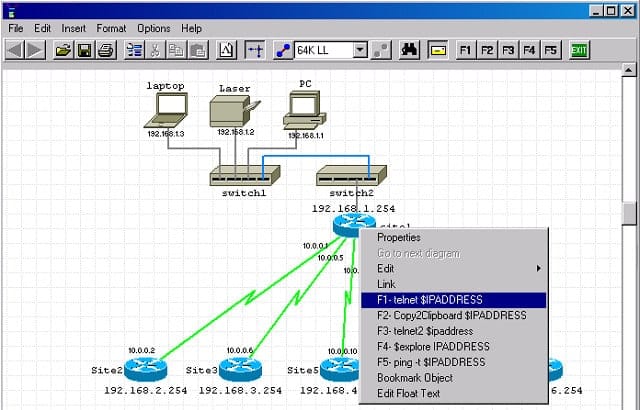

End-to-end bandwidth estimation of maximum link capacity (bottleneck bandwidth) and real-time available bandwidth.Auto-discovery of end-to-end QOS compatibility.qWAVE provides new features that focus on streaming multimedia and real-time content over variable bandwidth networks, including: This technology enables A/V applications to provide a quality user experience, especially on wireless home networks. QWAVE provides an API that allows applications to dynamically adapt to changing network conditions in real time.

Network topology mapper demo vide windows#
QoS support for A/V on home IP networks is advanced through new support in Windows Vista: qWAVE and QoS Extensions to LLTD. On a home network, A/V streaming traffic competes with other data and best-effort traffic. QoS refers to the mechanisms used to provide a desired level of network service to an application on IP-based networks. QoS Extensions: Prioritizing Audio/Video Streams to Devices The Windows Vista Network Map exposes the device UI as a right-click option, thereby providing easy access to the device, regardless of whether the customer installed a custom setup utility. LLTD enables easy, one-click access to the device’s setup and management Web UI. Would like their products’ industrial design or form factor to appear to users in Windows Vista.Want to reduce support costs and product returns due to setup problems.LLTD is meaningful for device vendors who: Providing a centralized Network Map ensures that a user-friendly view is easily available to show the overall network state and device health, to either the end user or a support assistant.

The ability to know network topology is important for diagnosing and solving networking problems, and it is especially important for streaming content over a wireless connection. In addition, the Windows Vista Network Map uses LLTD to determine connectivity information and media type (wired or wireless), so that the map is topologically accurate.
Network topology mapper demo vide mac#
When LLTD is invoked, it provides metadata about the device that contains static or state information, such as the MAC address, IPv4/IPv6 address, signal strength, and so on, as well as a scaleable icon that represents the industrial design or form factor of the device. Devices can also implement LLTD-and those that do so can report rich configuration information about themselves that appears in the various network map views available in Windows Vista, regardless of any IP configuration issues on the network. In every version of Windows Vista, LLTD is on and enabled by default. Exploring the Network: Link Layer Topology Discovery

Applications can dynamically adapt to changing network characteristics if devices support LLTD QoS Extensions. In addition, LLTD provides QoS Extensions that enable stream prioritization and quality media streaming experiences even on networks with limited and changing bandwidth. As the protocol name suggests, LLTD enables device discovery via the data-link layer (Layer 2) and determines the topology of a network. The specification for Link Layer Topology Discovery describes how the LLTD protocol operates over wired (802.3 Ethernet) and wireless (802.11) media. Specification link: Link Layer Topology Discovery Protocol Specification Network Topology and QoS Extensions: LLTD Implement LLTD with a custom icon to ensure that your product’s industrial design or form factor is graphically depicted. Devices that provide audio or video playback or that are bandwidth sensitive can implement the QoS Extension portions of the protocol to ensure that they receive prioritized streams and that changes in available bandwidth have little or no impact on the user experience. LLTD provides the added benefit of enabling quality media streaming experiences, even on networks with limited bandwidth. Any device that implements LLTD appears on the Network Map with a rich icon that represents the device, allowing users one-click access to the device’s Web user interface (UI). The LLTD protocol enables applications to quickly discover devices at the data-link layer, and it enables a central, graphical view of everything that is connected to the network.


 0 kommentar(er)
0 kommentar(er)
